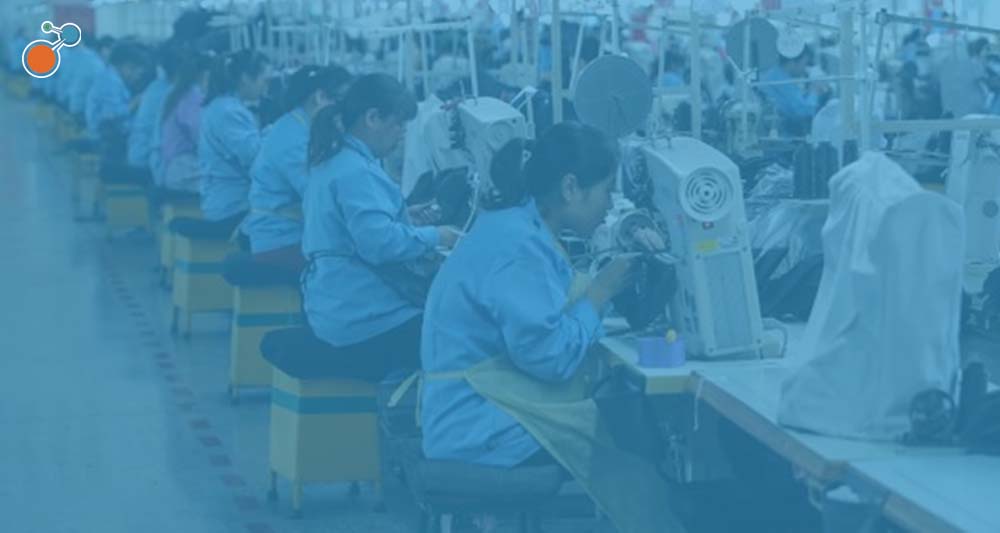How purchasing companies can ensure that their suppliers are keeping the right standards when it comes to working conditions and workers’ rights.
The development of markets globally has led to longer and more complex supply chains. Strategic alliances between companies and their suppliers have for ages extended beyond traditional limitations of geographical boundaries and time zone differences. Sophistication and specialization of supply chains has led to nations focusing on areas where they have distinct comparative advantages.
However, these advancements do not come without some level of risk. Companies that purchase goods and services, and outsource manufacturing to factories have come under scrutiny repeatedly. The issues often revolve around poor working conditions for workers, and at worse, the loss of liberty, in such factories. Some of the world’s biggest brands such as Nike and Apple have had their reputation come under risk due to these allegations.
How Companies Can Respond
Companies have no regulatory jurisdiction over working conditions of suppliers in other companies and in other countries. However, their financial muscle and the business they give to suppliers means they wield a great deal of influence. The response from these companies has been to develop and publish a code of conduct that suppliers must commit to adhere to. This code of conduct includes acceptable working conditions, social and ethical standards, and even expectations for sustainable operations.
The question is whether such publications and threats of blacklisting of non-cooperative factories work. Companies need efficient and cost-effective manufacturing partners. Are there other metrics to gauge suppliers on treatment of their workers and ethical standards?
The bad publicity that comes from exposes on unethical suppliers means loss of significant revenue. As such, the relationship is not worth the potential loss of market share. Companies therefore need ways of assessing a suppliers’ potential to live up to the standards. The following metrics have been found to indicate that a supplier will be more responsive.
Assess the Environment for Open Media and NGOs
The amount of freedom the media enjoys in each region or specific country is a good indicator of whether placing pressure on suppliers who operate there will have any effects on their operations. Free media can highlight incidences of workers being mistreated in factories without the fear of backlash from governments or moneyed corporations.
The number and strength of non-governmental organizations (NGO) that focus on labor rights can also indicate the likelihood of factories responding to complaints. Watch for countries reported that have limited media freedoms and have a low NGO density which can indicate an environment where workers are more likely to work in unfair or harsh conditions.
Certification by Standards Bodies
Research on audits carried out on suppliers found that companies that adhere to management standards such as ISO 9001 are likely to improve working conditions compared to those who do not. As such, it is safe to consider such certifications a predictor for responsiveness to complaints.
When seeking certifications from bodies such as the International Organization for Standards (ISO), companies create systems for continuous improvement of their processes. In doing so, they end up creating positive change in other areas including working conditions. In addition, the continuous improvement culture makes it less difficult and more likely to respond positively to concerns raised about labor policies.
Adopting Lean Management
Lean management is a philosophy on how a business runs its operations. It aims at minimizing waste, continuous improvement, problem solving, and quality control. A business that adopts lean management is likely to also follow set laws on working conditions and pay for its factory workers.
As such, when screening suppliers to work with, those companies that have adopted lean management or any other philosophy aimed at continuous improvement and waste minimization is a good candidate for a long-term engagement. They are more likely to understand the importance of working conditions and willing to invest in change.
Worker Pay
How does a supplier pay factory workers? Piece-rate compensation can often be a red flag. If a company pays workers based on units produced, there is little incentive for the workers to take a rest which can contribute to unsafe working conditions. The company will also likely see little incentive to invest in the long-term well being of the workers based on the belief they can easily be replaced.
As such, companies contracting factories to produce on their behalf risk their reputation by working with such suppliers. Look for and motivate suppliers to adopt other models of pay such as hourly rate or weekly rate to highlight partnership and value creation.
The Attitude towards Workers Unions
Research on suppliers finds that those whose workers were unionized were more likely to improve working conditions. This was attributed to having dialogue between the unions and employing companies. Unions have a mechanism to raise funds and channel them towards a given course of action. They have a greater chance of success, including being able to pursue legal actions if need be. Unions can also influence legislation on health and safety conditions at a country level.
Does Monitoring Suppliers Change Working Conditions?
Interestingly, research finds that suppliers who were serving buyers whose brands had been tarnished in the past are more sensitive to the issues and show greater levels of improvement in working conditions. This happens because such buyers are both diligent and vigilant about who they work with to avoid allegations coming up again.
Another finding is the impact that auditors have on the likelihood of companies to improve their working conditions. Using qualified and experienced auditors increases chances that the companies being audited will improve their working conditions. Good auditors will not only detect problems, but they will also suggest solutions.
Companies should also be careful about how they approach supplier audits. Conducting surprise audits with the intent of catching the supplier unaware erodes trust. Research shows that audits that are announced beforehand promote learning and improvement of the suppliers’ processes. In fact, audits should go together with programs for improvement. This is seen to be a best practice, where the supplier is aware of what the next audit will be looking out for.
Tips for Site Audits and Inspectors
Site audits are common in many industries. Research shows there are a few tips that can help improve strategic partnerships.
First, it is best to rotate audit firms. Having fresh eyes evaluate suppliers occasionally increases the chance that one audit firm will spot issues not spotted before by the other firm.
Including female auditors in the team is recommended as a best practice. Female auditors are more likely to be trusted with sensitive information by workers who have been threatened or exposed to unfair treatment.
Also, include an employee of the purchasing company’s team on occasion in addition to third-party auditors. These employee inspectors provide context about the business and its processes that is helpful to a supplier interested in doing better.
While it likely goes without saying, try to avoid situations where suppliers choose and pay the auditors. This situation can increase the risk of self-interest bias on the part of auditors.




